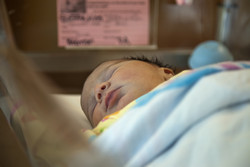Trending science: 3-D printed throat implants save the lives of three infants
Tracheobronchomalacia (TBM) is a rare condition that occurs when the walls of the airway are weak potentially causing the airway to become narrow or collapse. This can result in side effects such as an inability to absorb food, respiratory failure, and even cardiac arrest. In order to save three young TBM sufferers in the USA, researchers succeeded in developing and inserting 3-D printed splints that could keep the airways open and prevent the fatal side effects from occurring. The first case occurred in 2012 but the procedure was documented in a study in Science Translational Medicine journal just last week. According to MIT Technology Review, the three infant boys were each near death before the intervention. They were all on ventilators and the procedure was a ‘last-ditch effort to save their lives’ by doctors at the University of Michigan. Researchers began by performing CT scans on each boy to determine the precise size and shape of their trachea. According to Science magazine, the images were integrated with a computer model to design hollow, tube-shaped plastic splints. Next, the splints were manufactured using a 3-D printing technique called laser sintering in which a laser melts powdered plastic particles together layer by layer to build a 3D structure from the bottom up. Science notes, ‘The splints were designed not only to be flexible, to allow the airway to move, but also to stretch slowly over time to match the growth of each boy’s windpipe. They were made from polycaprolactone, a polymer that naturally biodegrades over 3 to 4 years when exposed to fluids in the body.’ The splints were wrapped around the damaged trachea and sewed in place to keep the airways open, allowing all three infants to come off a mechanical ventilator and leave intensive care. The study Abstract notes that, at the time of publication, the infants no longer exhibited life-threatening airway disease and had ‘demonstrated resolution of both pulmonary and extrapulmonary complications of their TBM.’ In time, the tracheal splints will fully dissolve and the boys’ windpipes are expected to be developed enough that they should continue to grow and work normally. According to the study authors, the process has broad application for medical manufacturing of patient-specific 3D-printed devices that adjust to tissue growth through designed mechanical and degradation behaviours over time. For further information, please visit: http://stm.sciencemag.org/content/7/285/285ra64
Countries
United States



